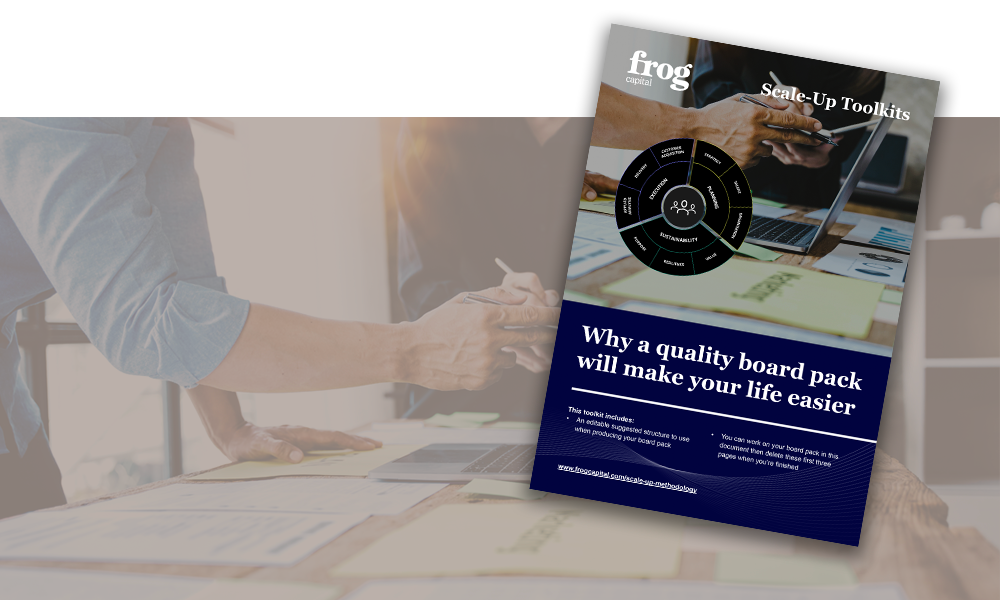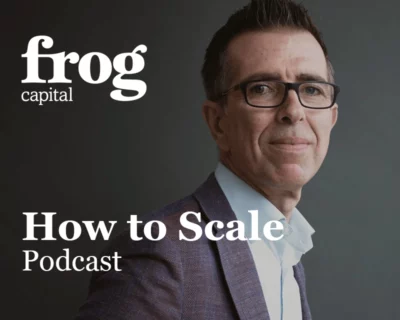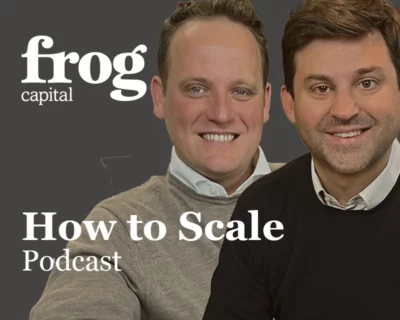To many stressed and stretched founders and CEOs, a board pack is an unwanted burden that comes with outside investment and consumes resources that could be better used to drive the business forward. This attitude is missing the point; the board pack drives the quality of discussion at the board meeting and if your board is not adding value you are either not making the most of the opportunity to talk strategically with people who have value to bring or you have the wrong people on the board.
“What is the purpose of a board pack?”
There are many answers to this depending on the stage of the company and the perspective of who you are asking. An early stage VC investor might just want to know what performance was like in the last period and what are the prospects for the next period. A larger company non-executive might say it needs to be sufficient for their fiduciary duty to acquire and maintain a sufficient knowledge and understanding of the company’s business to enable them properly to discharge their duties as directors. A more practically minded SME executive might say that the board pack provides the information to enable the discussion and decisions at board meetings to be as relevant and productive as possible. All are correct to some degree.
For a growth stage business, a key consideration will be the time required to prepare a board pack but this should be consolidation not creation as the board should only be reviewing information the company prepares for its own operational needs. When I was a CFO in a PE backed business I rejected many investor-director requests for additional information by simply asking: “What decision would be different if we discussed that information at the board meeting?”
Consistency is key
Additional work specifically for the board should therefore be the simple narratives from the CEO and CFO/COO and other departments heads as relevant and this should be a useful opportunity to step back from the day to day and assess progress from a higher level. It should encapsulate what worries or excites you not what you do every day. The board pack should have a consistent format so it doesn’t require re-invention and it builds trust by following up themes month after month not just presenting the good news and dropping elements that no longer read so well.
From the CFO point of view, I always considered the board pack to be the visible product of all the internal hard work, which helps to build confidence with stakeholders through being accurate, transparent, informative, insightful and demonstrates integrity and impartiality by being proactive in highlighting and addressing issues. It is not a selling document to make the board feel good about the business; it should be consistent and I would never change indicators to put performance in a good light, irrespective of what anyone else might want.
The finance report should be easy to digest and contain graphs, charts, colour-coding, and bullet point narrative, including useful KPIs and forecasts for P&L and cash flow, but the board pack as a whole should recognise that, especially for a growth stage business the finance section will always be a lagging indicator of value. The key divers will be customer behaviour, internal progress and challenges and value creation initiatives.
4 key elements
A good board pack architecture can be built around the Kaplin and Norton balanced scorecard approach which lists the four key elements as:
- Customer perspective (How do customers see us? – client acquisition, churn, penetration, new product take up, satisfaction ratings, references)
- Internal business perspective (What must we excel at? – unit economics, product innovation, lead times, staff retention and development)
- Learning and growth perspective (Can we continue to improve and create value? – life cycle to product maturity, time to market versus competition, market dynamics, responding to competitors or substitutes)
- Financial perspective (How do we look to shareholders? – sales growth, cash burn contribution margins, fixed overhead build, capex, trade debtors)
But in addition we should add a fifth:
- Governance perspective (How would we look under investigation, could be regulatory, litigation or due diligence related – minutes, actions, fiduciary duty disclosures, controls, reviews)
"What decision would be different if we discussed that information at the board meeting?"
Not all requests for information serve the same purpose.
Governance
It should be noted that though it is often non-execs who raise issues of information provision to meet fiduciary responsibilities, all directors should bare this in mind and be driving broad and open information exchange at board level. If a domineering CEO puts the company at risk through hidden unethical behaviour, all the directors are at risk and the executives cannot rely on the narrow remit of their title to save them from the obligation to push to know more.
The categories above take different perspectives but let’s be clear, a good board pack provides the agenda for discussion, it is not a presentation. In part the contents allow certain areas to require little discussion (most historical information should be taken as read and have sufficient explanation in the document or be discussed in advance with the more financially orientated non-execs) and allow the focus to be on more value add, forward looking topics.
Perspective matters
The people around the board table should be there because they can contribute to providing high level advice, best practice experience and help to resolve issues. They should not feel the need to drill too deeply into executive operational issues unless they are concerned about performance and competence. Matters reserved for the board should be clearly spelled out and addressed and any detailed operational information requests should be parked for a separate conversation to avoid derailing the potential to engage in valuable high level discussions. Concerned non-execs should spend more time in the business not use the board meeting as an examination on the detail.
All functional reports should be produced by the head of that department even if they aren’t board level and don’t deliver them. It is, however, good practice to get second tier management to present occasionally to the board both to broaden their own experience and give better visibility on the bench strength to the board members.Shockingly in tech growth businesses, the report I have noticed is most often omitted is the HR report. Virtually all these businesses spend the largest proportion of their overhead on people and would say they are its greatest asset; yet with no board report, this fundamental part of the business growth story might get no board airtime at all.
This agenda provides a comprehensive board pack for a small company, but as stated earlier nothing should be required that is not needed to run a fast growing operation that wants to scale up successfully. Executive responsibilities can vary (though I would strongly advocate otherwise not all companies have a CFO on the Board but they might have a CTO or COO) and drive a different board pack structure but the 5 perspectives should still be covered. This might be something to aim for over time given capacity constraints, but it would be interesting to hear a justification of why any part of the report is not required.
The board pack sets the agenda for board discussion and when done well helps to build trust and alignment between execs and non-execs. If you are not producing a quality board pack, I would be confident that you are not getting as much value out of your board meetings as you could and consequently not getting as much out of your business.
A good board meeting is more likely with a good board pack and a bad board pack makes it more likely to be an unproductive board meeting, but there are many other factors to consider, not least being who is sitting around the board table and why are they there. That is a topic for a whole other article.
Video
See Frog operating partners James Bagan and David Williams discussing the topic, available here.












